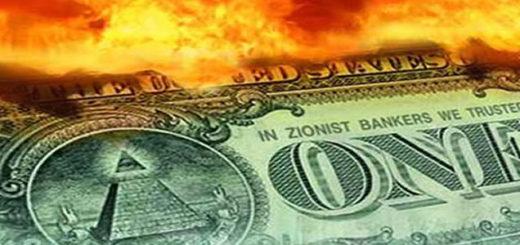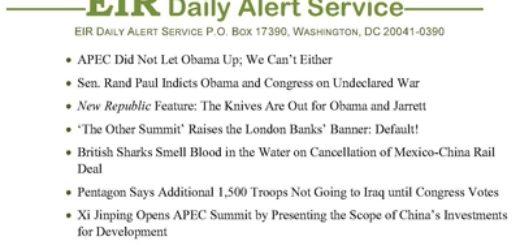Banks Are Leveraged 100:1 in Derivatives Weapons of Mass Financial Destruction
Paul Craig Roberts Warns of the Derivatives Weak-Spot in Big Banks
March 16, 2023, 2022 (EIRNS)—Paul Craig Roberts, who was Assistant Secretary of Treasury for Economic Policy during the Reagan Administration, gave, in both a March 13 article on his own website, and in a March 15 interview with RT, a chilling picture that the critical problem within the current banking crisis could be a generalized derivatives failure at the five largest U.S. banks, the core of the U.S. banking system. He also asserted that much of the current problem arises from the Federal Reserve’s hawkish interest-rate-raising policy, and the repeal of the Glass-Steagall Act in 1999.
Roberts told RT that five large U.S. banks—JPMorgan Chase, Bank of America, Citigroup, Wells Fargo, and Goldman Sachs—have trillions of dollars in derivatives that they are currently holding. Yet, their capital base is only in the billions. “So, they are exposed to risk in the trillions of dollars and they do not have the capital base to support that risk. So, if something happens again in these derivatives as it did earlier this century when we had the big crisis, those banks will be in jeopardy,” he told RT.
Roberts pointed out that if the core money-center banks get into trouble from their derivatives, this problem will spread to Europe. These banks, he remarked, are simply too large and there’s much interrelatedness. Roberts asserted, “I doubt if Biden or anyone in his administration, or even the Federal Reserve, has any idea of the extent of risk. To put it very [clearly], the five large U.S. banks hold derivatives, the value of which is twice the size of the GDP of the entire world. They hold $188 trillion in derivatives. So, what is the risk of this? No one knows.”
Roberts traced the root of troubles back to 1999 when Franklin Roosevelt’s 1933 Glass-Steagall Act was repealed. Prior to that, he said, commercial banks couldn’t engage in investment banking, while investment banks took risk on their own money. However, when Glass-Steagall was lifted, the commercial banks started to gamble with the savings of depositors. That has allowed tremendous risk-taking, which was previously not part of the system.
He pointed out that the Glass-Steagall Act had prevented panic-buying crises for 66 years until it was repealed in 1999. “When they took that away, they initiated a pattern of behavior that leads to crises,” Roberts said.
He warned in his conclusion, “So, we don’t really know the full extent of the trouble in the banks… It’s just like the derivatives that blew up in 2007/2008, and we lost banks, we lost Wall Street firms.”
U.S. Fed and JPMorgan Chase Take Extraordinary Measures To Keep First Republic Bank from Failing
March 16, 2023, 2022 (EIRNS)—Coincident with the Swiss National Bank’s $54 bailout of Credit Suisse, the U.S. Treasury, Federal Reserve and JPMorgan Chase are taking extraordinary steps to prevent the $212 billion in asset First Republic Bank from failing.
On March 12, the San Francisco-based First Republic Bank announced it was on life support with “additional borrowing capacity from the Federal Reserve, continued access to funding through the Federal Home Loan Bank, and ability to access additional financing through JPMorgan Chase,” the nation’s largest bank with $3.8 trillion in assets. In instances like this, JPMorgan Chase acts as an unofficial conduit for funds to distressed banks, with some unspoken secret arrangement with the Fed and Treasury that they will backstop the JPMorgan Chase should there be difficulties. First Republic said that it now had access to $70 billion in funds.
Despite that arrangement, on March 13, Moody’s rating service placed First Republic under review for downgrade. A very high 70% of First Republic’s deposits are uninsured, leaving it vulnerable to runs.
In 2008 the failure of the $310 billion Washington Mutual Bank was the largest bank failure in American history. The next two largest have been the failure of Silicon Valley Bank and Signature Bank this week. Were First Republic Bank to fail, then First Republic, Silicon Valley Bank, and Signature Bank would constitute the second, third, and fourth largest bank failures in U.S. history.
















